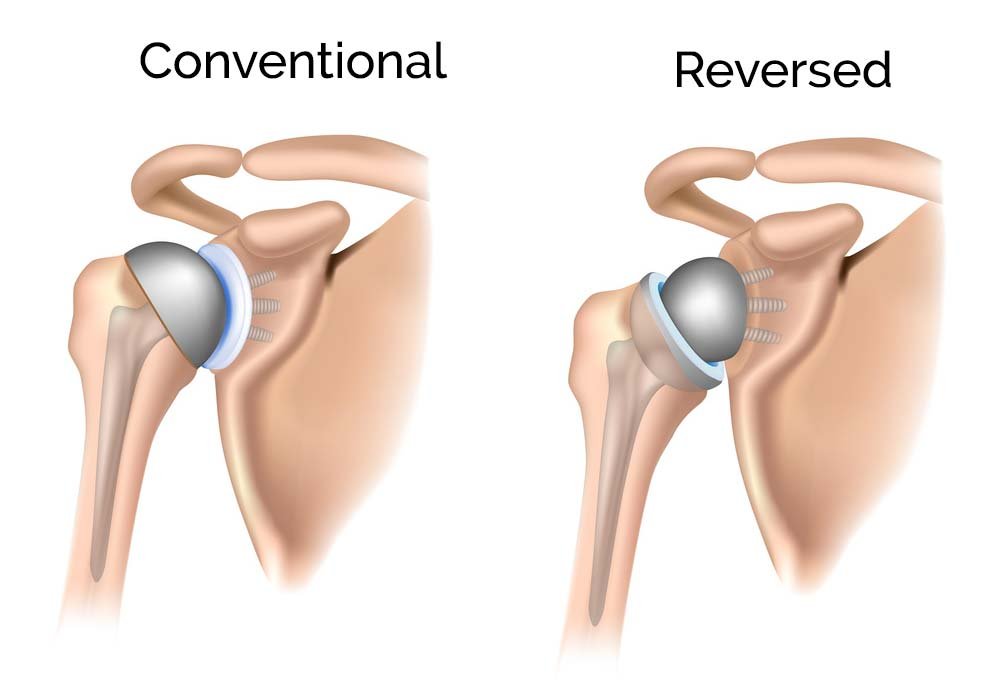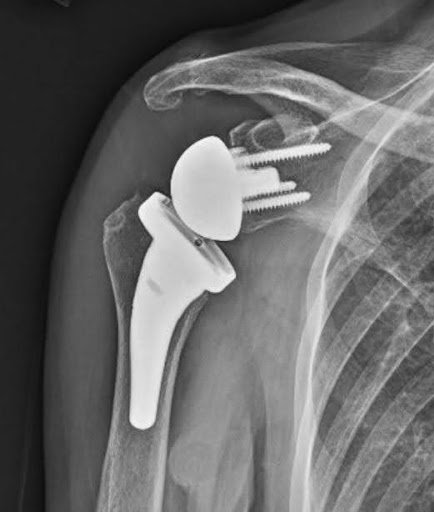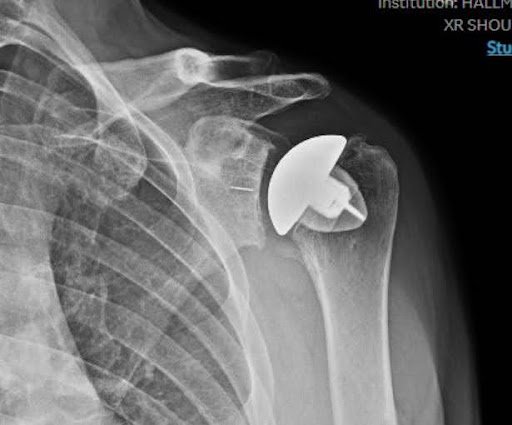Shoulder Replacement Surgery
Understanding Shoulder
Replacement Surgery
There are two types of shoulder replacements—an anatomic total shoulder and a reverse shoulder arthroplasty (aka replacement).
An anatomic total shoulder recreates the anatomy of your shoulder. A reverse shoulder reverses the normal anatomy of your shoulder. Multiple factors determine which implant is best for your shoulder. Some of the factors are your age, activity level, severity of arthritis, amount of erosion of the bone, and the quality of your rotator cuff tendons.
Anatomic Total Shoulder Replacement
An anatomic total shoulder recreates the normal anatomy of your shoulder. In an anatomic total shoulder replacement, the humeral head (ball) is removed and replaced with a metal ball connected to a short stem (made of titanium and cobalt chrome alloys). The glenoid (the socket-like side) is smoothed and a smooth shallow plastic cup (made of polyethylene) is securely affixed with bone cement.
The most common reason for an anatomic total shoulder replacement is severe osteoarthritis or degeneration of the shoulder joint such that there is bone-on-bone contact between the ball and socket. The rotator cuff must be intact for a total shoulder replacement to function properly.
Reverse Shoulder Replacement
In a reverse shoulder replacement, the normal anatomy of the shoulder joint is reversed. The humeral head (ball) is replaced with a plastic cup and metal stem, and the glenoid (socket) is replaced with a metal ball that is attached to the bone with screws. Similar to anatomic shoulder replacement, the head and stem are made of titanium and cobalt chrome alloys, and the glenoid component is made of polyethylene. The reverse shoulder replacement allows your deltoid muscle to take over the work of moving your shoulder.
The most common reasons for performing a reverse shoulder replacement surgery are irreparable damage to the rotator cuff and severe degeneration of the shoulder joint where there has been loss of bone from the socket (glenoid). Reverse shoulder replacements are also commonly used to revise a failed anatomic total shoulder replacement as well as certain shoulder fractures.
Reverse Shoulder Replacement X-Rays
Standard Total Shoulder Arthroplasty X-Rays
Patient-Reported Outcomes (PRO) are health outcomes directly reported by the patient, encompassing aspects such as pain, function, and overall satisfaction. These metrics are crucial for tracking a patient’s progress after surgery and assessing their recovery. Dr. Walcott places great importance on understanding the postoperative well-being of her patients. She will inquire about various aspects of your shoulder pain and function before the surgery and at several intervals during your recovery journey.







